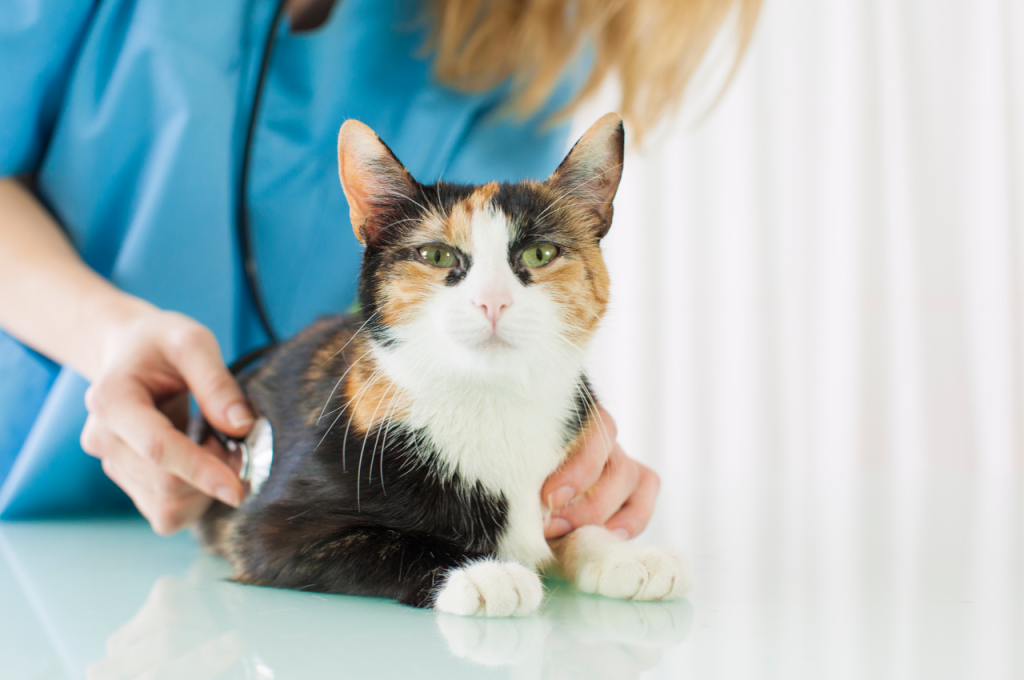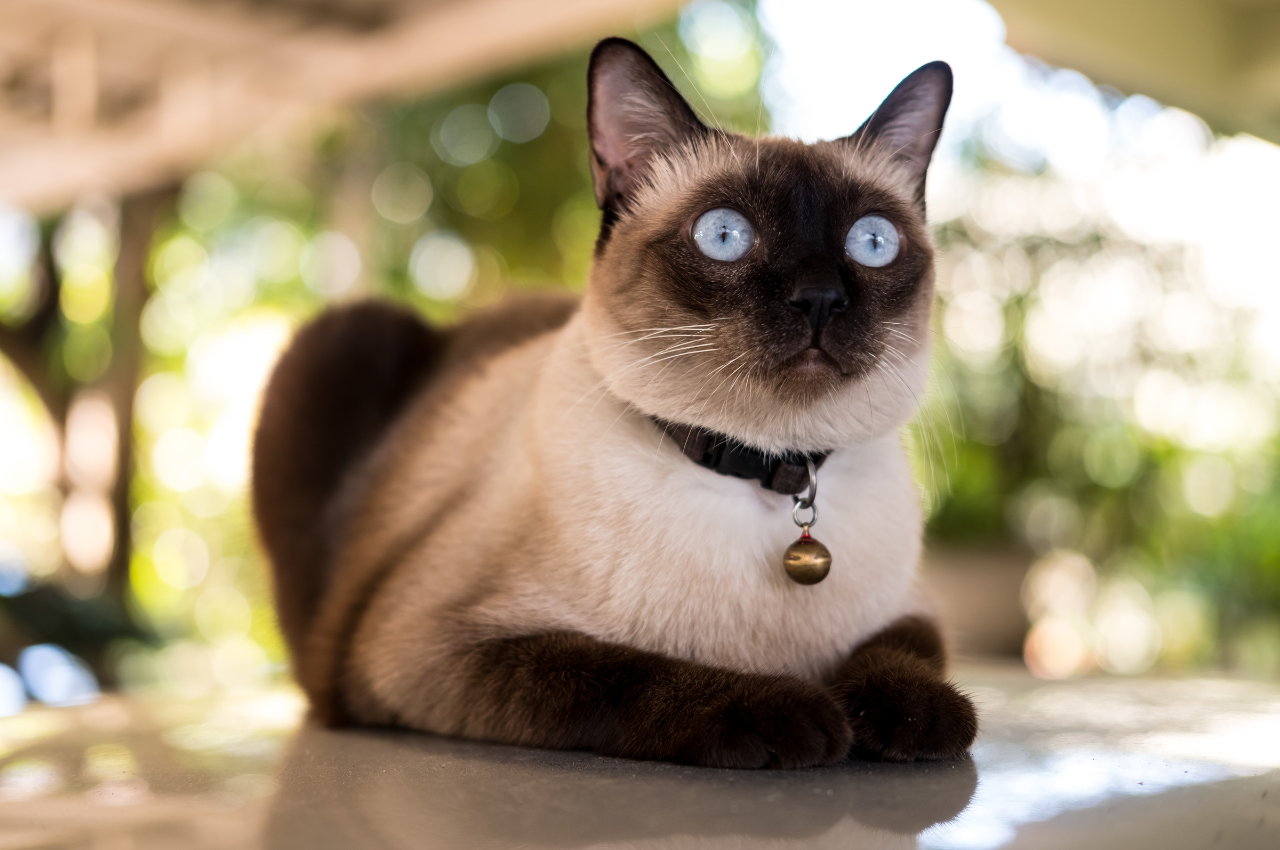Signs of cat anxiety include excessive grooming, hiding, aggression, and changes in appetite or behavior. Other signs may include overreacting to noises, excessive meowing, or avoidance of interaction.
Understanding these signs can help address your cat’s anxiety and improve their overall well-being. Cats are known for their independent and mysterious nature, but they can also experience anxiety like humans. It’s important for cat owners to recognize the signs of anxiety in their feline companions to provide proper care and support. By being aware of these signs, you can help your cat feel more comfortable and secure in their environment. In this blog post, we will explore common signs of cat anxiety, potential causes, and ways to help alleviate your cat’s stress and anxiety.
Introduction to Cat Anxiety
Cat anxiety is a common issue that can manifest in various signs, such as excessive meowing, hiding, aggression, or excessive grooming. Understanding these signs can help cat owners identify and address their feline friend’s anxiety in a timely manner.

Anxiety in cats is a common issue that can have a significant impact on their well-being. Cats can experience anxiety due to various reasons, such as changes in their environment, health issues, or past traumas. Understanding the signs of cat anxiety is crucial for identifying and addressing this condition effectively.
Recognizing The Signs
Recognizing the signs of cat anxiety involves observing changes in behavior. Look for excessive grooming, hiding, vocalization, or aggression. Cats may also exhibit changes in appetite or litter box habits. Understanding these signs can help address anxiety issues promptly and ensure your cat’s well-being.
Impact on Feline Health
Cat anxiety can have detrimental effects on their health, leading to issues such as a weakened immune system:
- Digestive problems
- Urinary issues
- Weight loss or gain
- Behavioral problems
- And a decreased quality of life
Understanding these signs and the impact of anxiety on cats is essential for providing them with the care and support they need to lead happy and healthy lives.
Behavioral Changes
Behavioral changes are a common indicator of anxiety in cats. Understanding these changes is crucial for identifying and addressing your feline friend’s emotional well-being.
Hiding Patterns
Cats may exhibit excessive hiding as a response to anxiety. This behavior serves as a coping mechanism, allowing them to retreat to a safe space when feeling stressed or overwhelmed.
Aggression and Irritability
Anxiety can manifest in aggressive or irritable behavior, leading to uncharacteristic outbursts or hostility towards other pets or even their human companions.
Physical Symptoms
Physical symptoms of cat anxiety may include excessive grooming, hiding, decreased appetite, and aggressive behavior toward other pets or humans. Keep an eye out for these signs and consult with a veterinarian for proper diagnosis and treatment.
Grooming Excessively
Grooming excessively can be a sign of cat anxiety. Cats may lick, chew, or bite their fur until it leads to bald patches or sores. This behavior is often a coping mechanism for stress or anxiety. If you notice this, it’s essential to address the underlying cause and consult with a veterinarian.
Changes in Appetite
Changes in appetite can be a sign of cat anxiety. A stressed cat may eat significantly less or more than usual. If you notice your cat’s eating habits have changed drastically, it could be a response to anxiety. Monitoring these changes helps identify and address potential anxiety in your feline friend.
Vocalization Shifts
Cat anxiety can manifest in vocalization shifts, such as excessive meowing or growling. These signs indicate their distress and should be addressed to ensure their well-being.
Increased Meowing
One of the signs that indicate a cat may be experiencing anxiety is increased meowing. Typically, cats meow to communicate their needs or wants, such as hunger or attention. However, when a cat is anxious, they may start meowing excessively and in a different tone or pitch. This increased vocalization can be a way for cats to express their unease or seek reassurance from their owners.
Unusual Sounds
In addition to increased meowing, cats with anxiety may also exhibit unusual sounds. These sounds can include growling, hissing, or even howling. Such vocalizations are not typical for a cat in a calm state and can be a clear indication of their distress. It is important to pay attention to these unusual sounds and try to identify the underlying cause of your cat’s anxiety.
Litter Box Issues
Cat anxiety may manifest through litter box issues. Signs include avoiding the litter box, urinating outside it, or excessive grooming. Other signs may include hiding or aggression.

Litter box issues are one of the most common signs of anxiety in cats. When a cat experiences anxiety, it can lead to them avoiding their litter box or having accidents around the house. These issues can be frustrating for both the cat and their owner, but it’s important to understand why they are happening and how to address them.
Avoidance of Litter Box
Cats may avoid their litter box if they feel stressed or anxious. This can be due to a number of factors, such as changes in their environment, the addition of a new pet or family member, or even a dirty litter box. If your cat is avoiding their litter box, it’s important to first rule out any medical issues by taking them to the vet. Once any medical issues have been ruled out, it’s important to address any potential stressors and ensure their litter box is clean and easily accessible.
Accidents Around The House
Another sign of cat anxiety is having accidents around the house. Cats may urinate or defecate outside of their litter box if they feel stressed or anxious. This can be due to a variety of reasons, such as feeling threatened by a new pet or family member, changes in their routine, or even a dirty litter box. If your cat is having accidents around the house, it’s important to clean the affected areas thoroughly and address any potential stressors. Providing multiple litter boxes in different areas of the house may also help alleviate this issue.
In conclusion, litter box issues are a common sign of anxiety in cats. If your cat is avoiding their litter box or having accidents around the house, it’s important to address any potential stressors and ensure their litter box is clean and easily accessible. With patience and understanding, you can help your cat feel more comfortable and alleviate their anxiety.
Environmental Triggers
Cats are known for their independent and self-reliant nature, but just like humans, they can also experience anxiety. It’s important for cat owners to be able to recognize the signs of anxiety in their feline friends so they can provide the necessary support and create a calm and secure environment for them. One of the key factors that can contribute to cat anxiety is the environment they live in. Let’s explore some of the common environmental triggers that can lead to anxiety in cats.
New Pets or People
Introducing new pets or people into a cat’s environment can be a major source of anxiety. Cats are creatures of habit, and sudden changes in their social dynamics can be overwhelming. They may exhibit signs of anxiety such as hiding, excessive grooming, or aggression. It’s important to introduce new pets or people gradually, allowing the cat to adjust at their own pace. Providing them with a safe space where they can retreat can also help alleviate their anxiety.
Changes in The Home
Cats are highly sensitive to changes in their environment, and even seemingly minor alterations can trigger anxiety. This includes changes in furniture arrangement, household routines, or even the addition of new objects. Cats thrive on routine and familiarity, so any disruptions to their established patterns can cause stress. To minimize anxiety, it’s important to maintain a consistent routine and provide the cat with a stable and predictable environment.
Additionally, moving to a new home can be extremely stressful for cats. The unfamiliar surroundings, new smells, and unknown territory can lead to heightened anxiety. During the moving process, it’s essential to create a safe and secure space for the cat, with familiar objects and scents to help them feel more at ease.
Cats can experience anxiety due to various environmental triggers. By understanding these triggers, cat owners can take appropriate measures to create a calm and secure environment for their feline companions. Whether it’s introducing new pets or people, or managing changes in the home, being mindful of these factors can help alleviate cat anxiety and promote their overall well-being.
Managing Anxiety
It’s important for cat owners to recognize the signs of anxiety in their pets, as this can greatly impact their well-being. Once anxiety is identified, it’s crucial to take steps to manage it effectively. This involves creating a safe space, establishing routine and predictability, and providing calming techniques. By addressing your cat’s anxiety, you can help them feel more secure and content in their environment.
Creating a Safe Space
Cats often seek out safe, quiet spaces when they’re feeling anxious. Providing them with a designated area where they can retreat can help alleviate their stress. This space should be equipped with familiar items such as bedding, toys, and scratching posts. Additionally, consider incorporating pheromone diffusers or calming sprays to promote a sense of security.
Routine and Predictability
Cats thrive on routine and predictability, and disruptions to their schedule can trigger anxiety. Establishing regular feeding times, play sessions, and grooming routines can provide a sense of stability for your cat. Additionally, maintaining a consistent environment by minimizing changes to their living space can help reduce stress and promote a sense of security.
Professional Care and Treatment
Professional care and treatment are essential in managing cat anxiety. When your cat exhibits signs of anxiety, it’s important to consult a vet for proper diagnosis and guidance on anxiety medications and therapies.

When to Consult a Vet
If you notice persistent changes in your cat’s behavior such as hiding, excessive grooming, or aggression, it’s time to consult a vet. Excessive meowing or urination outside the litter box, loss of appetite, and destructive behavior can also be signs of anxiety.
Anxiety Medications and Therapies
Veterinarians may prescribe anxiety medications such as fluoxetine or buspirone to help manage your cat’s anxiety. Additionally, behavior modification therapy and environmental enrichment can be beneficial in alleviating anxiety in cats.
Frequently Asked Questions
Here are some commonly asked questions about What are signs of cat anxiety:
How to Calm an Anxious Cat?
To calm an anxious cat, create a quiet, safe space. Use pheromone diffusers and calming music. Avoid sudden movements. Spend time with gentle petting and play. Consult a vet for anxiety relief products.
What Are Anxious Behaviours in Cats?
Anxious behaviors in cats include hiding, excessive grooming, aggression, loss of appetite, and excessive vocalization.
What’s A Common Behavior of A Cat That Feels Stressed Or Threatened?
When stressed or threatened, a cat may exhibit behaviors like hiding, excessive grooming, or aggression. They may also vocalize more and display changes in appetite or litter box habits.
How Do You Know if a Cat is in Distress?
To know if a cat is in distress, look for signs like excessive meowing, hiding, aggression, loss of appetite, lethargy, and vomiting. Keep an eye on their breathing rate, heart rate, and body temperature. If you notice any of these symptoms, contact a veterinarian immediately.
Conclusion
Cat anxiety is a serious issue that should not be overlooked. It can manifest in various forms and may lead to further health complications if not addressed properly. Identifying the signs of cat anxiety is crucial in providing the necessary care and attention to our feline friends.
As responsible pet owners, we should always strive to create a calm and stress-free environment for our cats to thrive in. Remember, a happy cat is a healthy cat.
